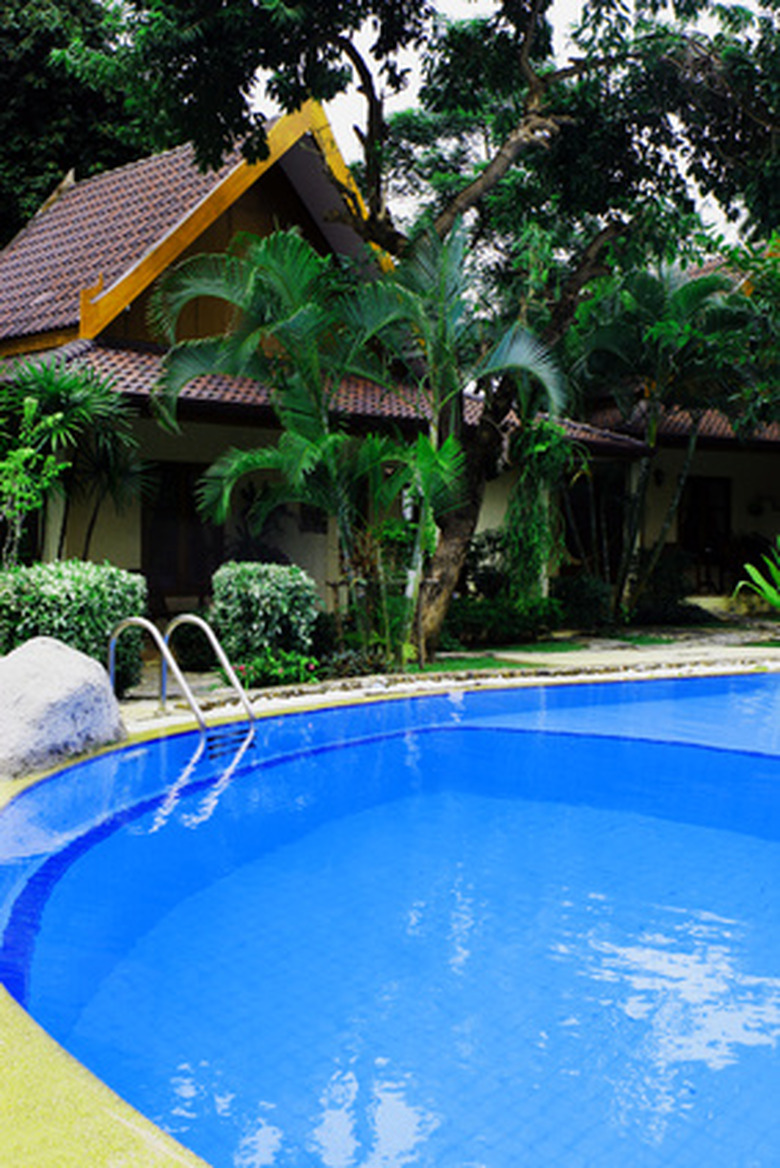What Is The Rinse Cycle On A Swimming Pool Filter?
As its name suggests, the rinse cycle on a swimming pool filter uses water to clear away any dirt or debris that remains after cleaning out the filter. The three main types of swimming pool filters are sand, diatomaceous earth (DE) and cartridge. Cartridge filters trap dirt, which is then removed by cleaning or replacing the portable cartridge. DE and sand filters, however, require that you periodically clean the filter material while it's still inside the filtration system. The rinse cycle runs after this cleaning process to flush away any remaining debris and reset the filtration material.
Filter Media
Filter Media
Sand swimming pool filters use special silica sand as the filter medium. Rather than being smooth and rounded, filter sand is rough and square-shaped, which allows it to trap dirt and debris particles as small as 20 to 100 microns (a micron is one-millionth of a meter) in the filter tank. Diatomaceous earth filters use DE powder as a filter medium. When the powder is added to the tank, it coats a set of filter grids located inside. DE filters can trap particles as small as 3 to 5 microns.
Function
Function
All swimming pool filters work by trapping dirt and debris inside the filter tank as pool water circulates through the filtration system. With a sand or DE filter, as the amount of dirt and debris build up in the tank, the pressure with which the water moves through the filtration system increases. When the pressure gauge reads 8 to 10 pounds per square inch (psi) higher than the start-up reading, it is time to clean or backwash the filter. Most pools must be backwashed and rinsed every two weeks.
Backwashing
Backwashing
In cartridge filtration systems, cartridges get washed outside the pool or thrown away with the old filter. Cleaning sand and DE used for water filtration is more difficult. To do so, you must set the valve on your filter system to "backwash." When the backwash setting is selected, water runs backward through your filtration system and gets sent into the waste line rather than into the pool. Any dirt and debris trapped in the sand or DE get flushed into the waste line along with the water, thus cleaning out the filter material. Backwashing continues until the water coming out of the filter runs clear; a process that typically takes two to three minutes.
Rinse Cycle
Rinse Cycle
The rinse cycle gets turned on immediately after the backwash cycle and lasts 30 seconds to one minute. In a sand filter, the rinse cycle allows water to flow back down through the sand to flush out any remaining dirt and debris from the filter and piping. The rinse cycle also restratifies (deposits in layers) the sand, letting it resettle in the filter tank. In a diatomaceous earth filter, the rinse cycle accomplishes the same task as in a sand filter, except during backwashing, dirt, debris and some of the DE powder are removed. Rinsing after backwashing flushes out any remaining loose DE powder as well as other contaminants. The DE filter is then returned to the filter setting for a few minutes, and new diatomaceous earth is added to replace any that was lost during backwashing. Like the backwash setting, the rinse cycle sends the water to the waste line rather than back into the pool.
